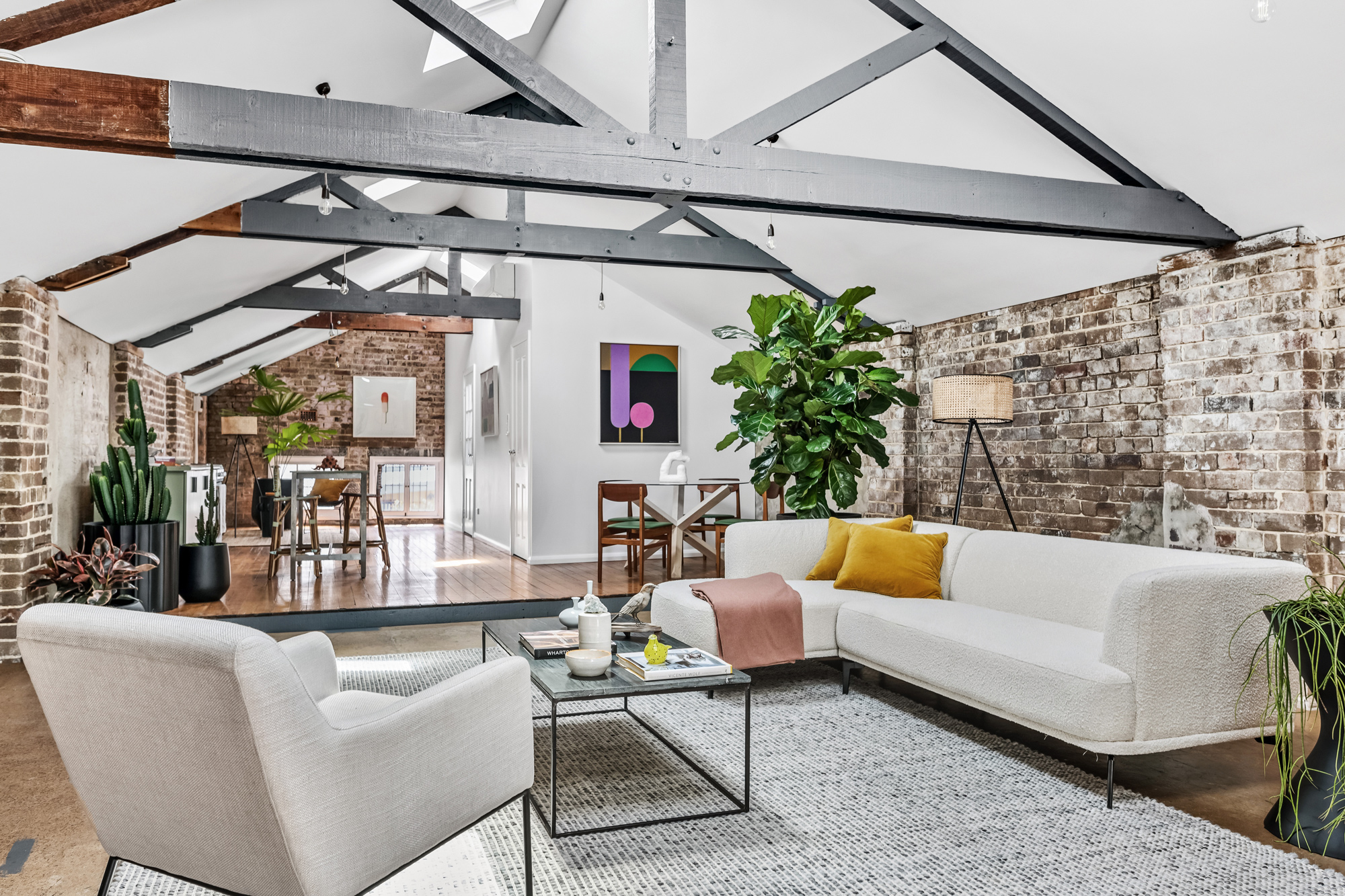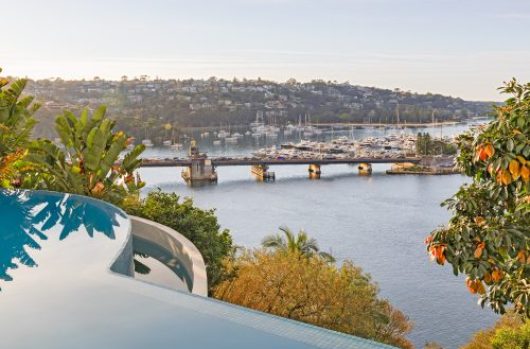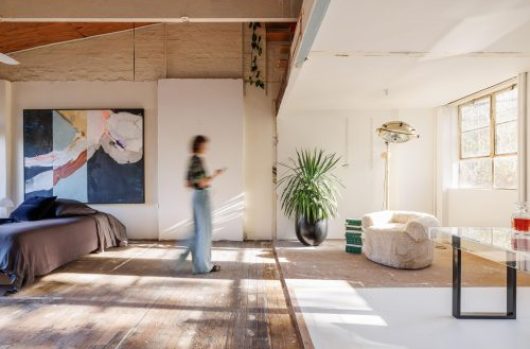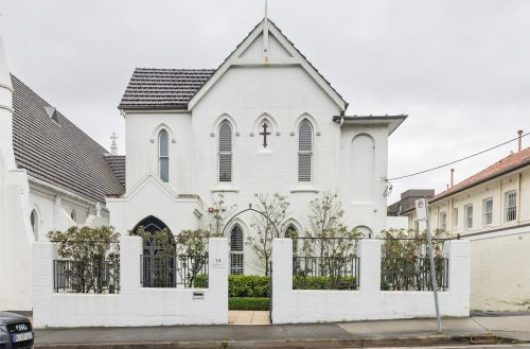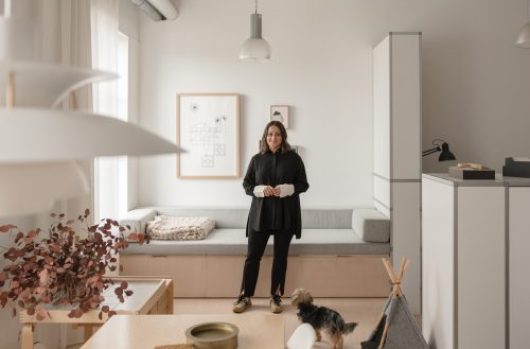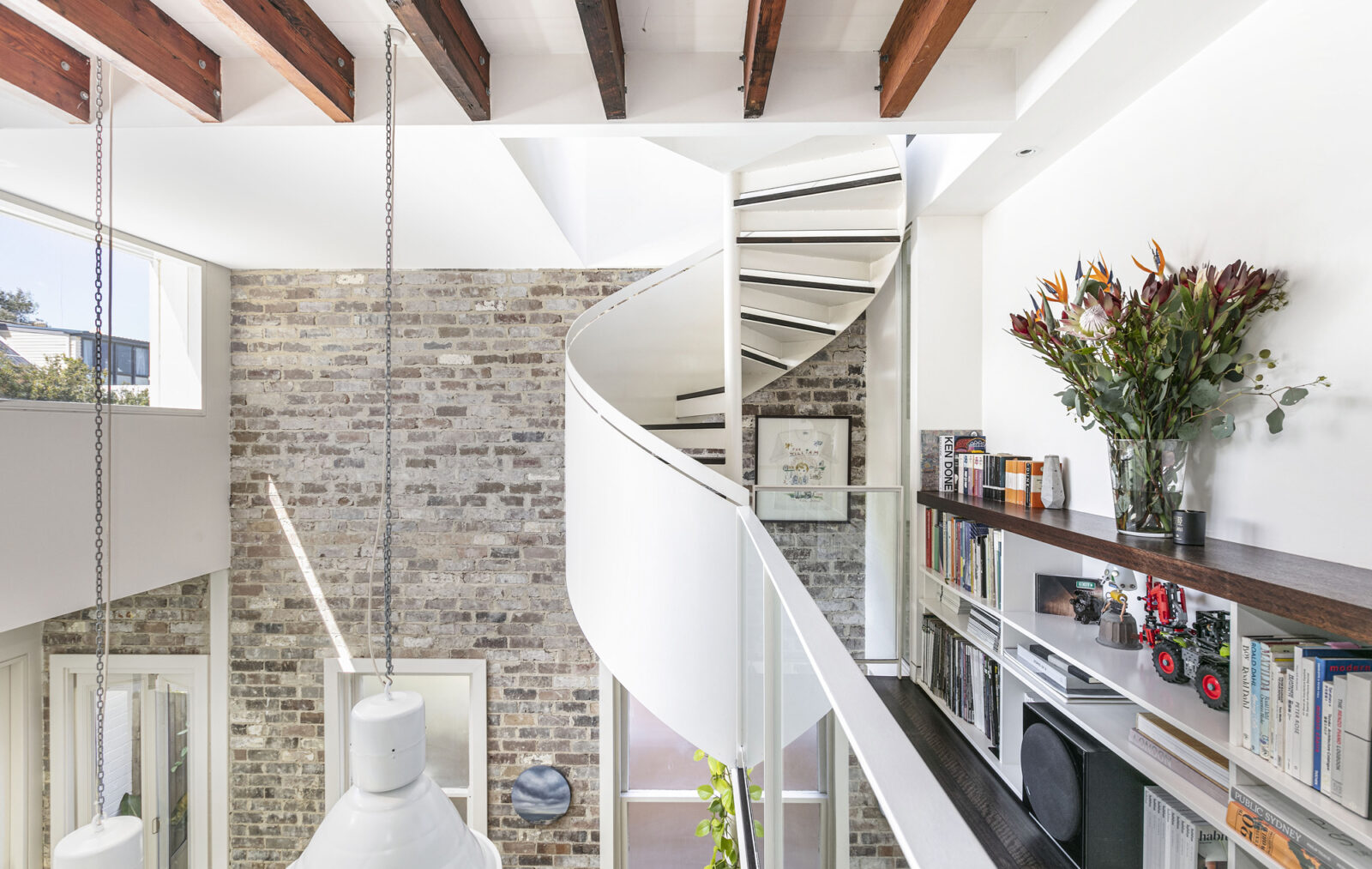
Stacking up: The case for warehouse living.
If there’s one type of home that never fails to inspire, it’s warehouse conversions. We explore the five reasons buyers are vying for their slice of industrial history.
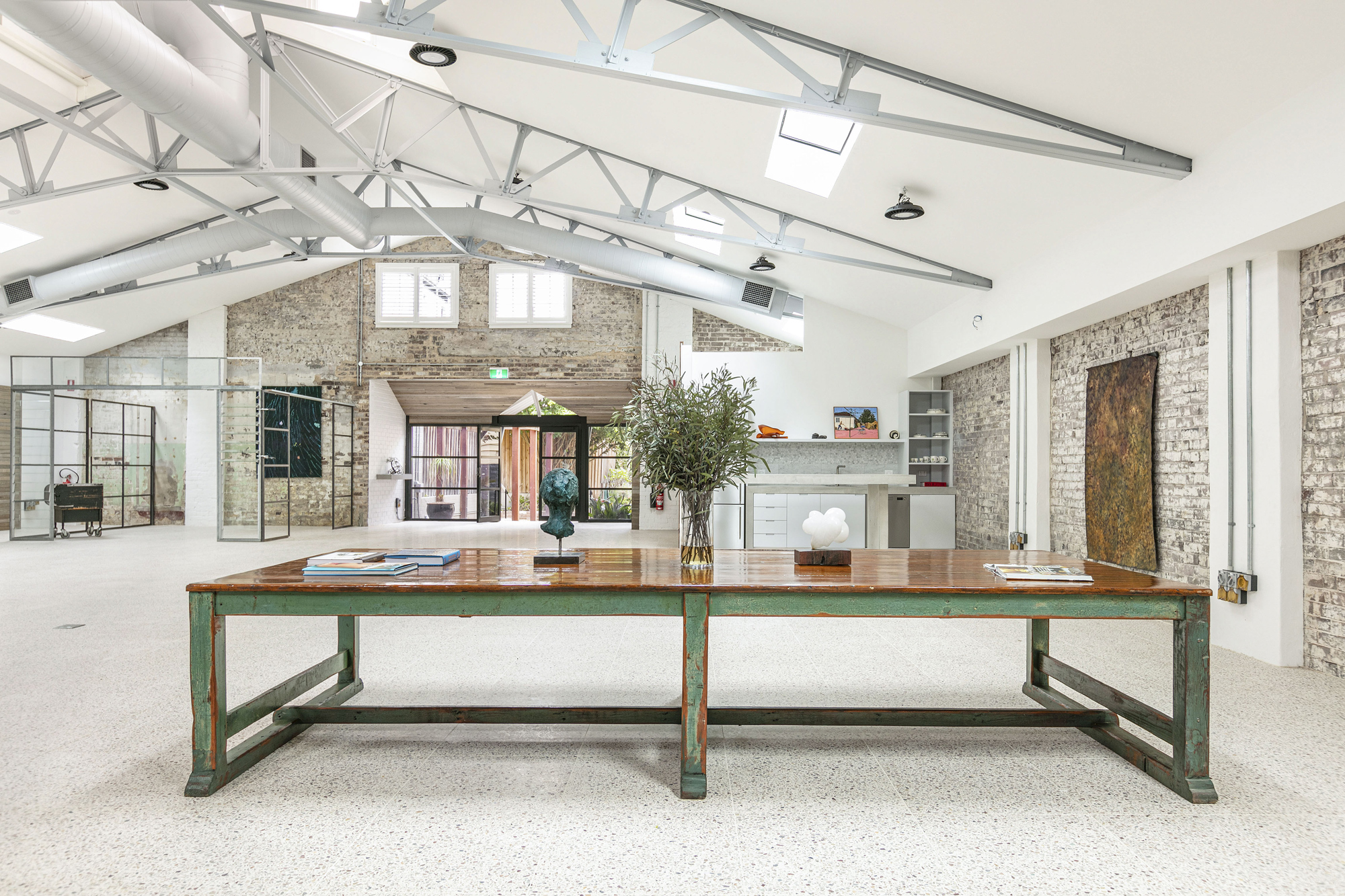
1. Space to think, room to grow.
Three years on from the pandemic, the physical relationship between work and life remains forever changed. Our homes are no longer just somewhere to live – they’re where our passions and our careers often play out, too. This is where the scale and flexible floorplans of warehouse conversions are particularly sought after. “Warehouse conversions have been a favourite among buyers in the creative industries for years – artists, designers, musicians and the like. But what’s continued to gain pace in recent years are the percentage of buyers who are intent on living in a way that allows them to integrate work and life,” says BresicWhitney founder, Shannan Whitney.
“As an asset class, warehouses – both in their original ‘raw’ form and when converted – provide homeowners huge potential or what I like to call the ‘creative headroom’ to design their lives. When buyers find a place that fits, they often hold onto them for many years, sometimes decades,” he added. “The main challenge buyers are coming up against now, certainly over the past 12-24 months, has been a very limited supply.”
Some of those to have hit the market in recent years include 36 Hutchinson Street, St Peters – a two-level property rich in industrial spirit, scale, and materiality, with timber, copper and concrete elements. 16 Princess Avenue Rosebery was similarly striking. The 1960’s sawtooth factory had been nurtured as a dramatic three-bedroom home and creative office of two of Australia’s leading talent managers – Mark and Lizzi Morrissey.
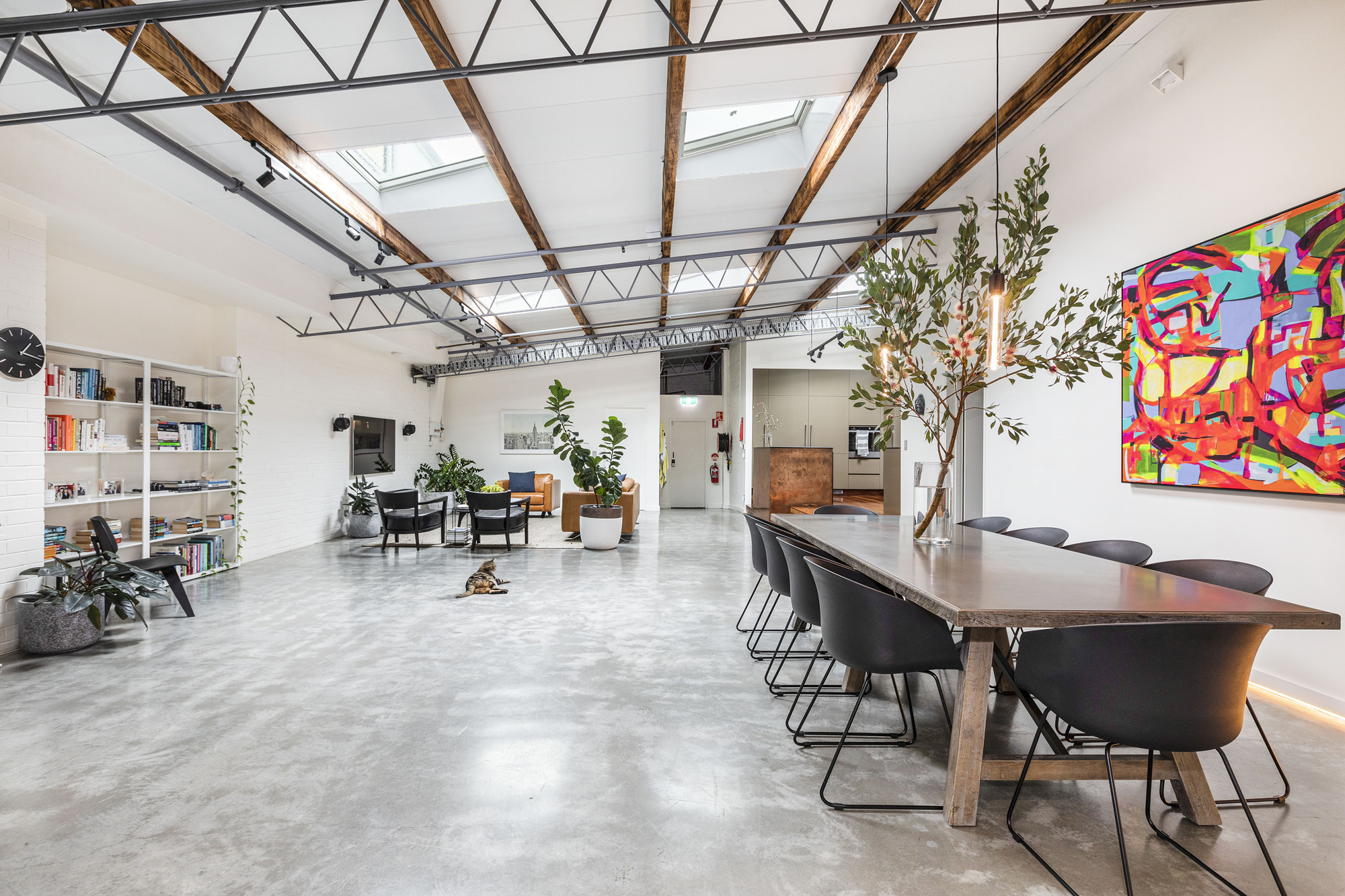
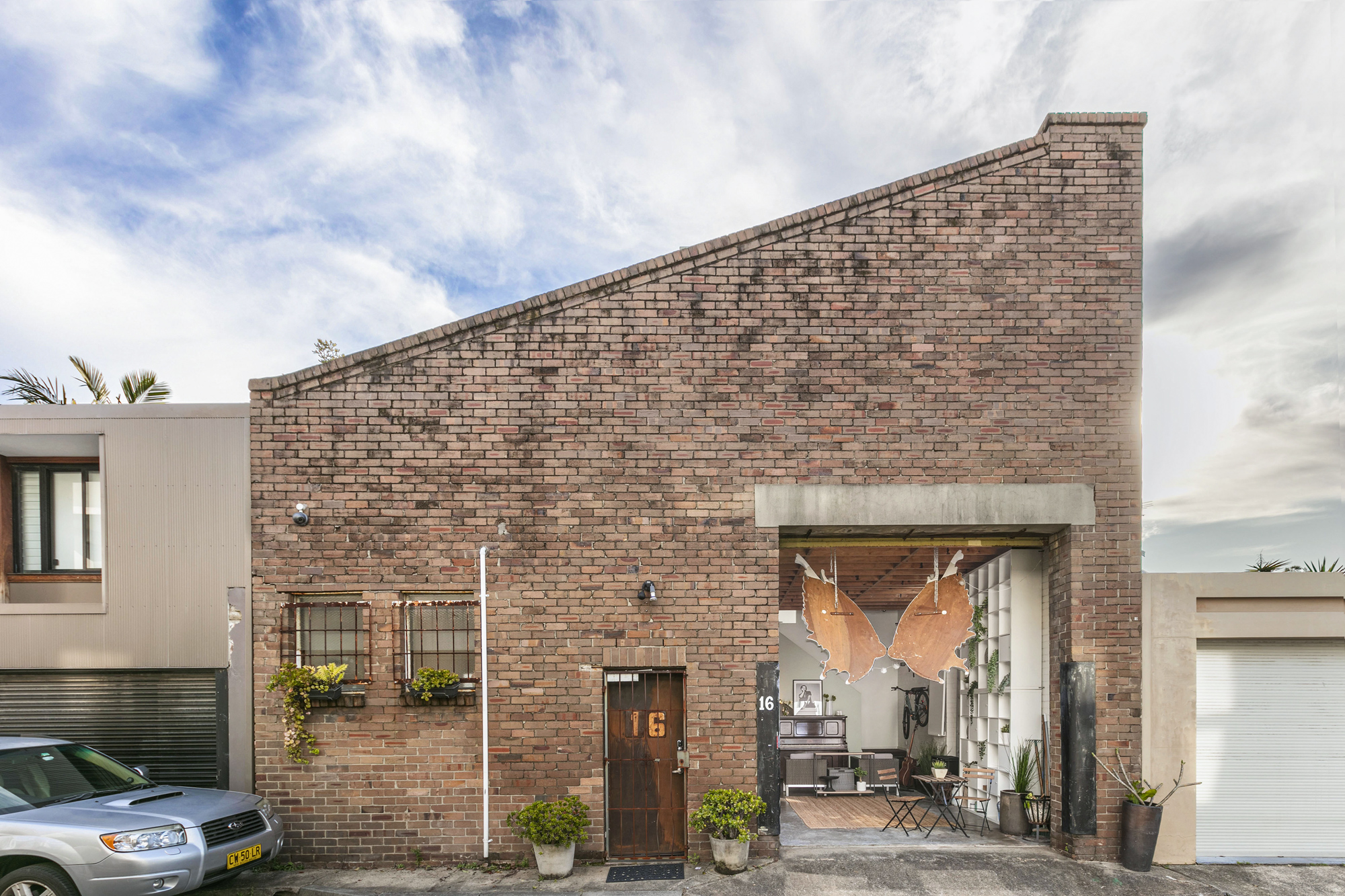
2. Modern history.
Every house has a story to tell, but chances are, warehouses have some of the best. “They say that homes have a mood and this is particularly true for warehouses. There’s an unmistakable atmosphere that is hard to replicate,” Shannan says. “This excites a lot of buyers because they see it as their chance to be part of the property’s story, particularly in and around the Inner Sydney which has so much of its own local history. To own a property that you know has housed interesting people, characters and stories is something a lot of buyers are now more attune to.”
The former badge and button factory at 52 Queen Street Newtown reflected how well warehouse conversions can marry the past and present. Its former architect owner took it on as personal project, transforming it into a three-level showpiece that balanced refinement with rawness. A spiral staircase led up to a rooftop terrace, taking in views to Botany Bay and beyond.
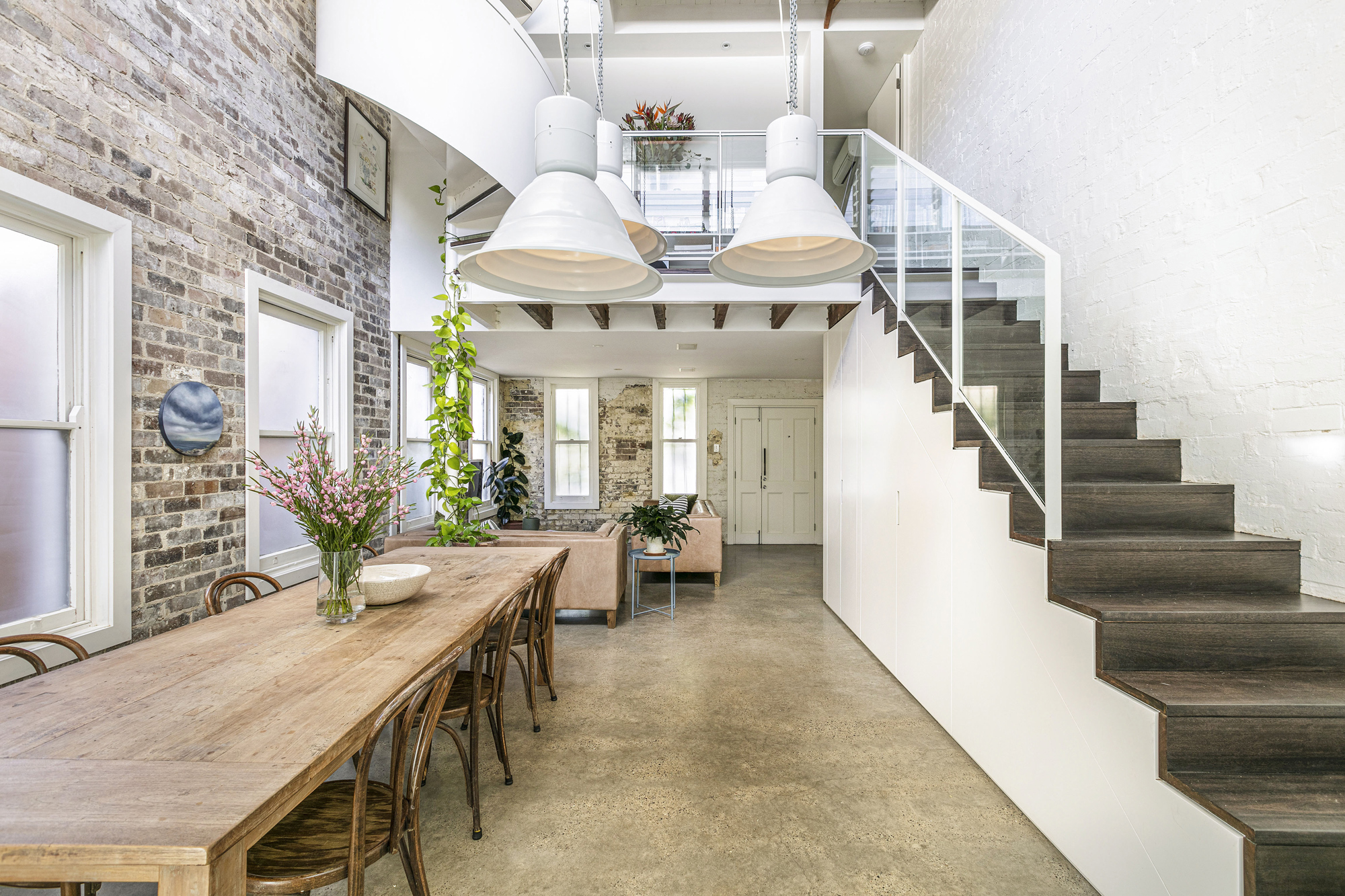
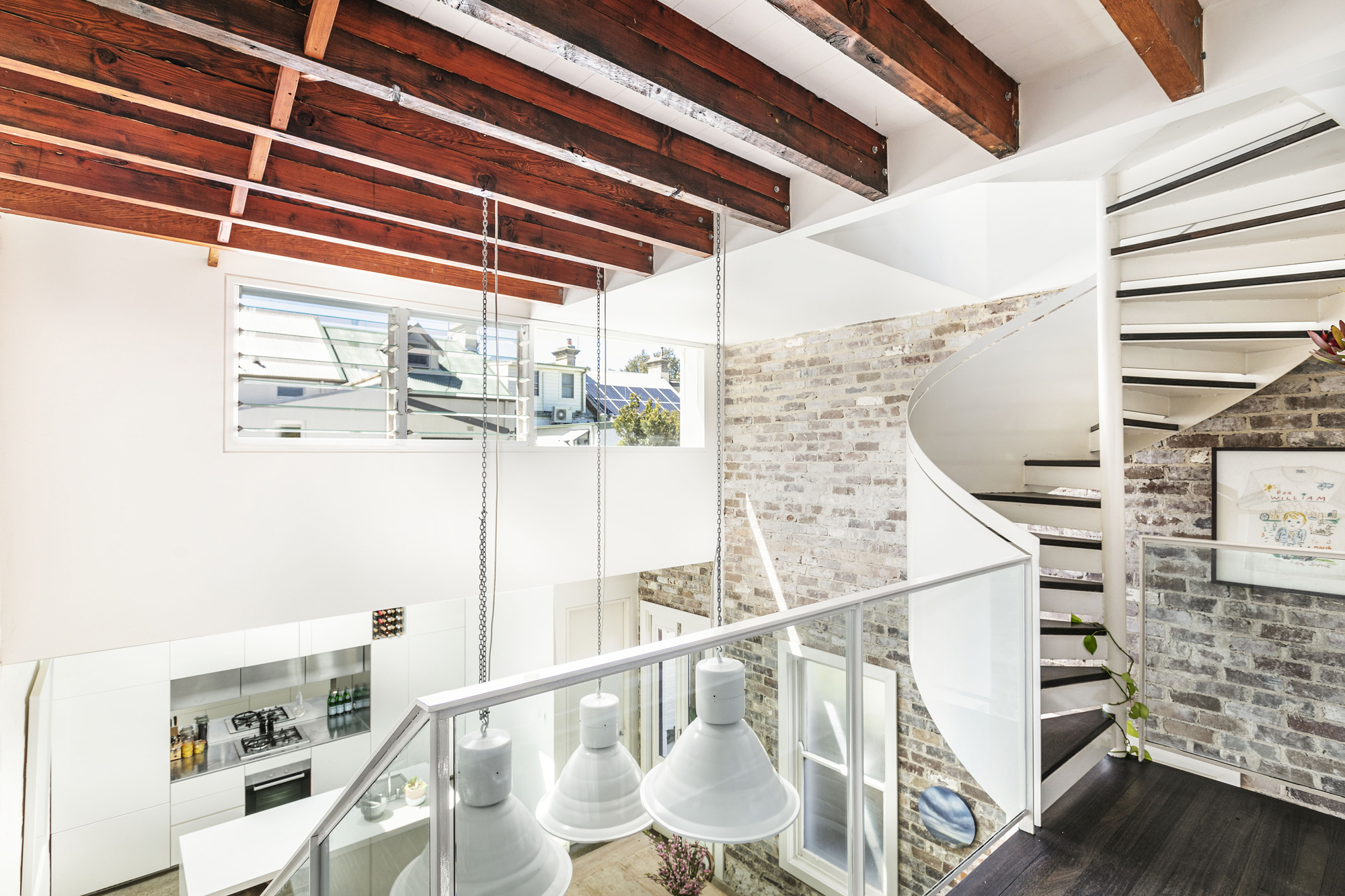
Proving this can also be done on a larger scale is 28-30a Montague Street Balmain – currently on the market with a guide of $8.5 million. Encompassing many uses over the last century, ranging from a wool store in the early 1900s, to the home of the Balmain Co-Op Society, and more recently commercial office space, it’s now being offered as a single residence of up to 10 bedrooms. With over 1,200 square metres of internal space, light on three sides and impeccable Federation-era architecture, there’s no shortage of presence or potential.
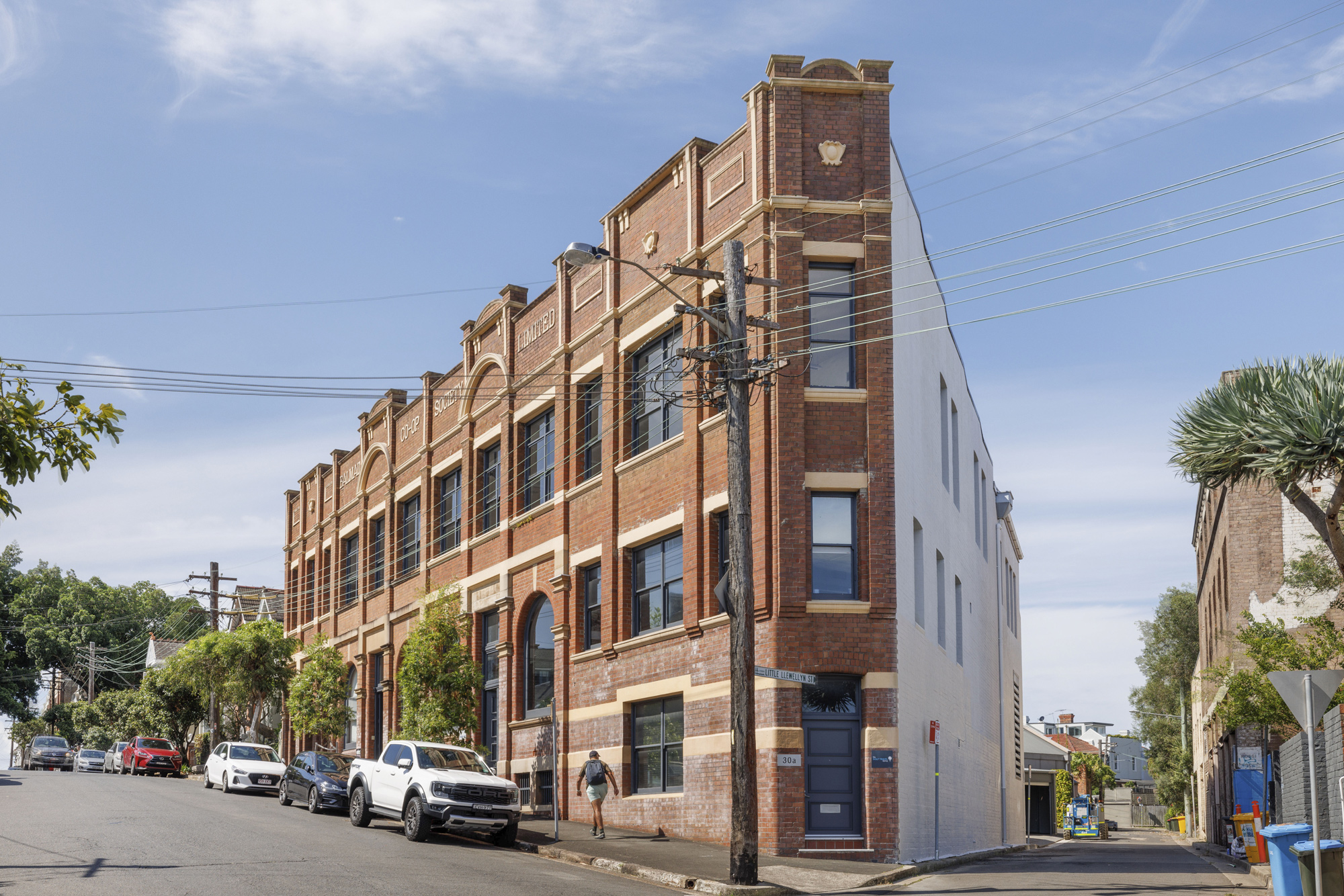
61 Pine Street Chippendale is equally rich in history – this time, from the middle of the century. This 1960-built, four-level former industrial building is as authentic as they come. “These original warehouses are understandably not for every buyer, given the work and at times approvals processed needed to redevelop them. The key for buyers who are looking to secure this type of property is to look at the development upside –factors like comparative stock, floor-space ratio and on-site parking – as well as the neighbourhood it’s in,” says Shannan. 61 Pine Street, also currently for sale, offers an undeveloped, residential zoned property in one of the suburb’s most peaceful streets. It also has original details, steel-panelled windows, and is in walking distance to some of the Inner City’s best destinations.
3. Family tree.
Forget what you know about warehouses being in unsuitable or undesirable residential locations – 33 Whites Creek Lane, Leichhardt proves otherwise. The former industrial property, bordering Annandale and in a quiet laneway position, had been creatively reimagined by its former owner, architect Petar Danicic and family into a luxurious four-bedroom residence.
Centred around a double-height, internal glass atrium that literally opened up to the sky, the home integrated recycled industrial materials with contemporary design. In addition to a spacious mix of work, life and family zones, location was a driving factor of demand for the property, which recently sold for $4.3 million. BresicWhitney selling agent Chris Nunn said, “The location of the property certainly drove enquiry – the Inner West remains at the top of list for lots of young families and homeowners. Almost every group we showed this property to commented on the excellent location and wow factor of the home.”
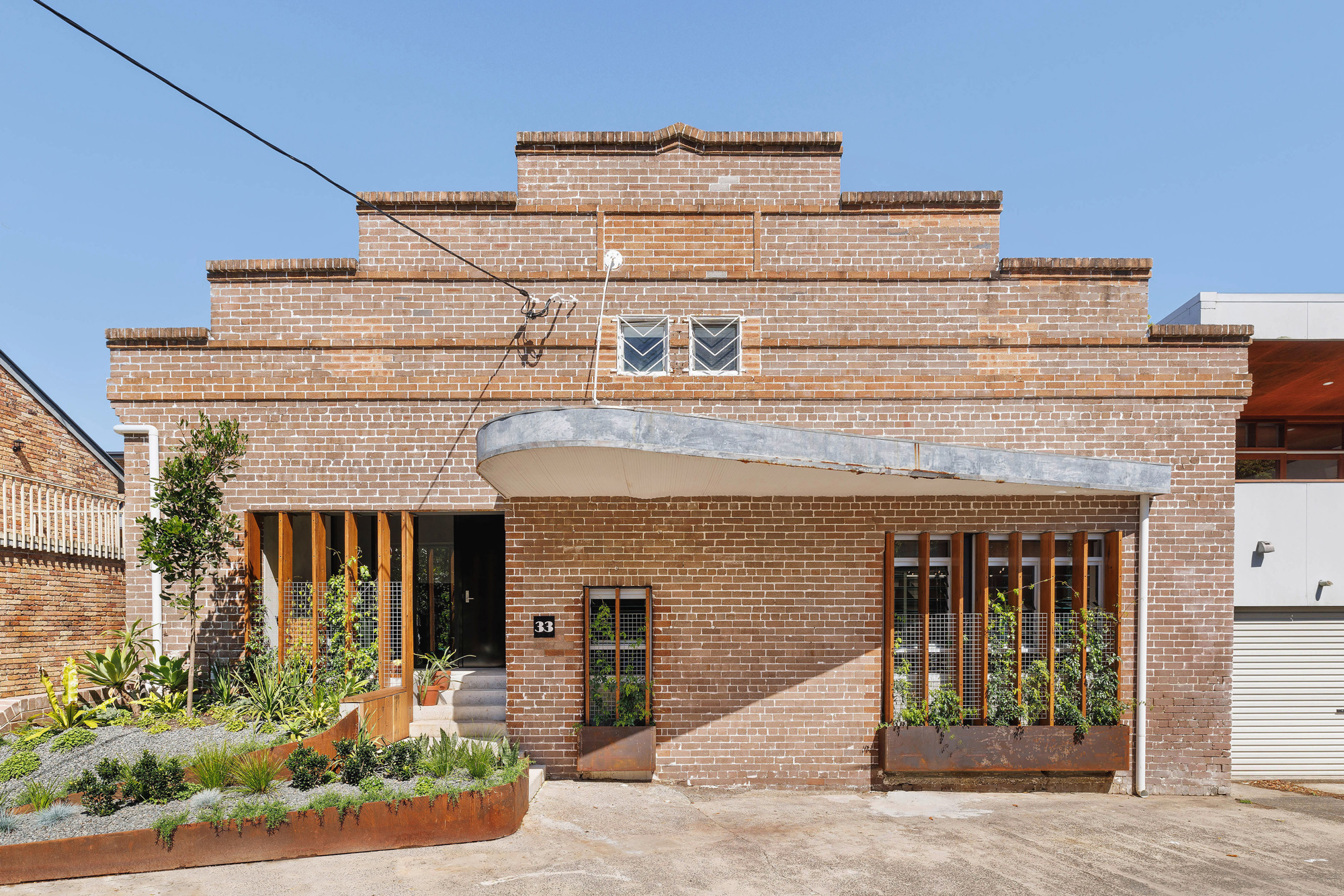
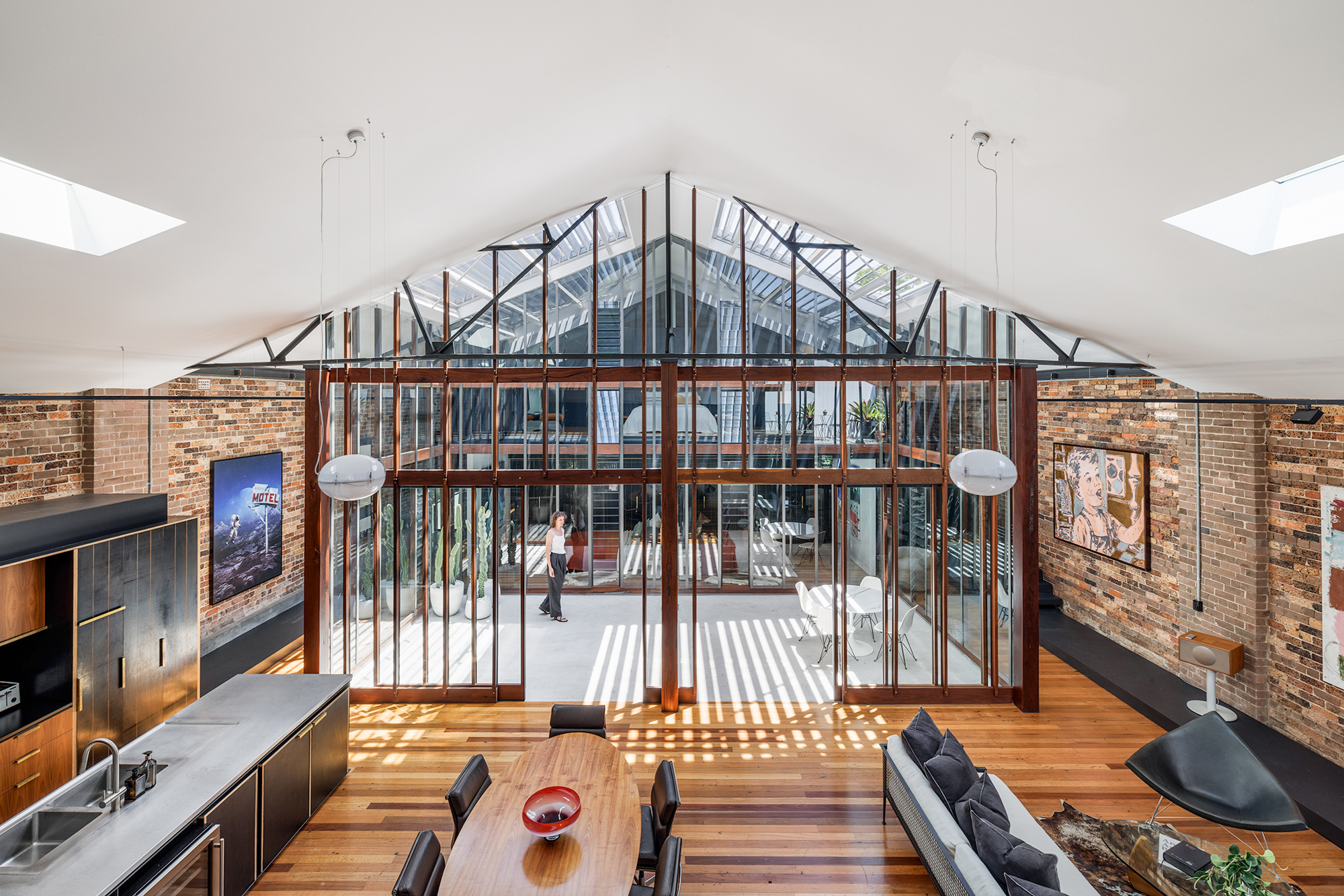
Just minutes away from 33 Whites Creek Lane lies another warehouse-turned-family-home. A former sign-printing factory in a park-side location, 26 Mackenzie Street Leichhardt cemented the case for family warehouse living. Having recently sold, it was love at first sight for the new owners. It would seem, therefore, that the sentiment of former owners Michael and Amy about it being a ‘dream home’ was indeed true. In an interview with BresicWhitney at the time, Michael and Amy said they had been looking for a warehouse conversion for “some time”, and were drawn to this property’s quiet location, natural light, liveability and potential.
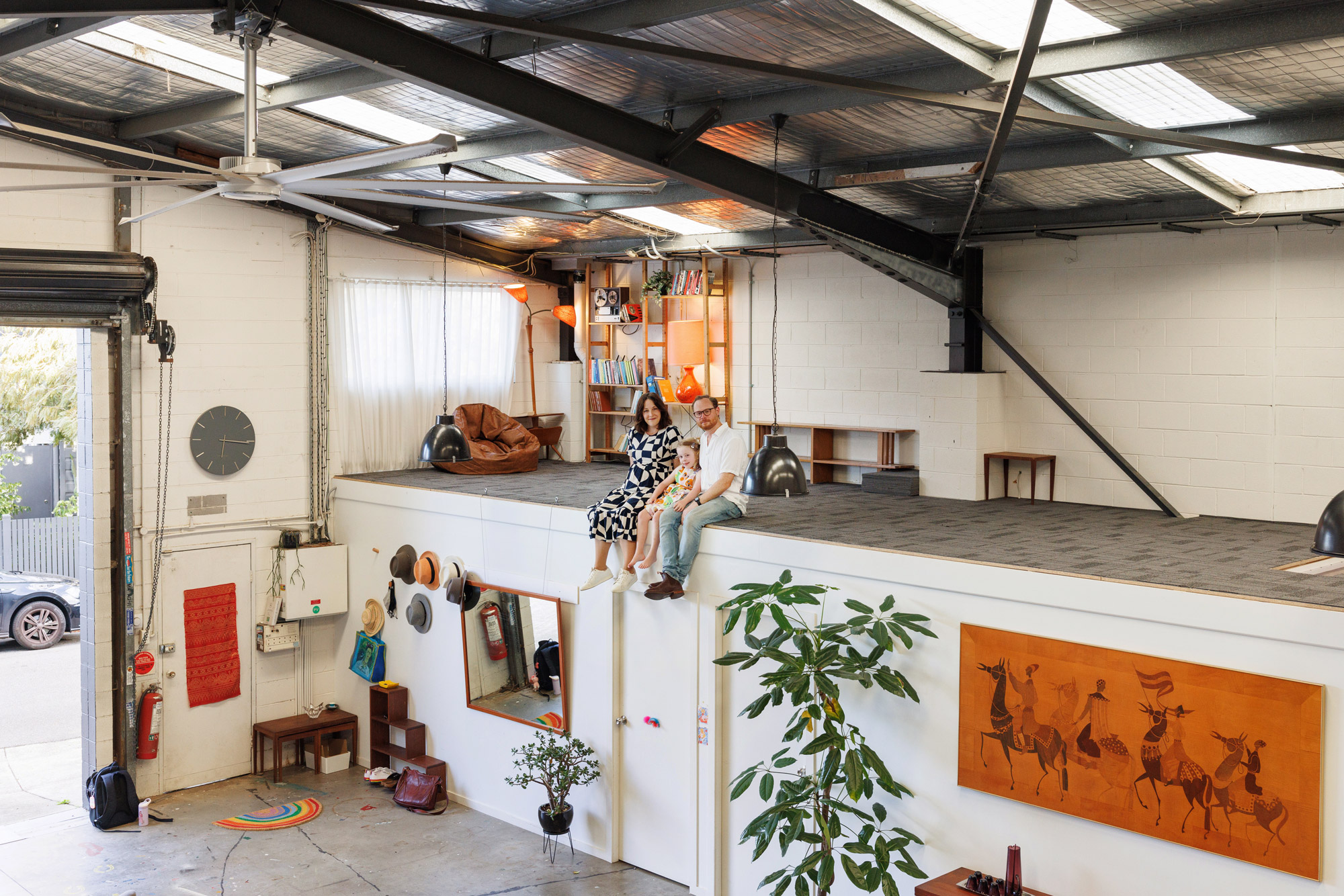
4. Unexpected luxury.
For some, luxury is water views, a wine cellar or four-car garage. For others, it’s century-old history. The former home of the Commonwealth Wooden Pulley company at 1 Mayes Street Annandale epitomised this. French oak floors, vintage doors, keyless entry, a Wi-Fi-controlled gas fire, rooftop deck and more were just some of the sophisticated design decisions that led to its successful sale in 2020.
Selling agent Chris Nunn said, “This property had been extensively updated for a modern buyer. With all the elements you would expect from a newly built luxury home, it also had an authenticity and patina that was quite special. Often, it’s not one or two improvements that give the higher-end warehouse conversions a sense of luxury, but the mix between the two elements. They end up complimenting one another and are able to celebrate the property’s evolution over time.”
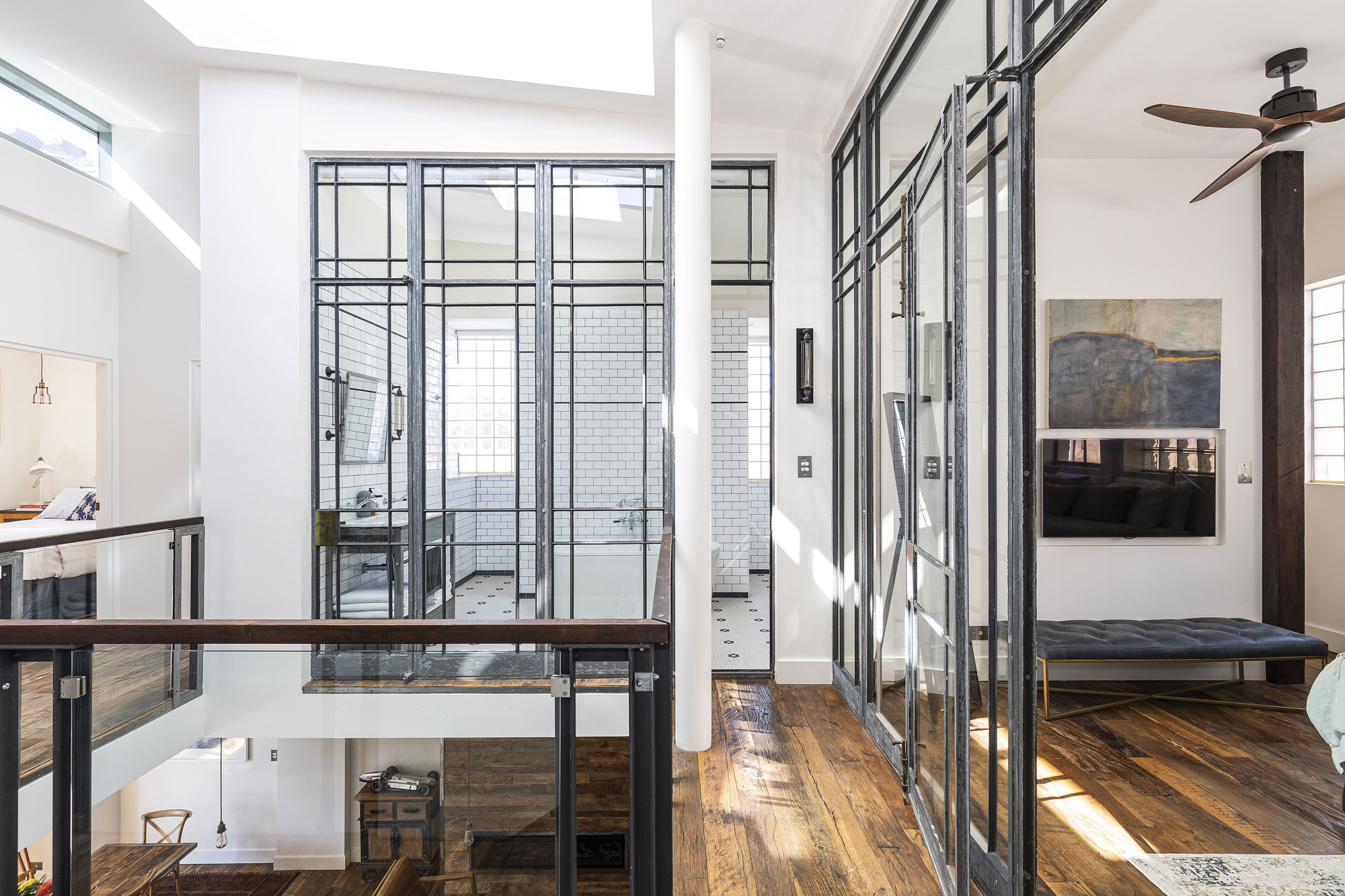
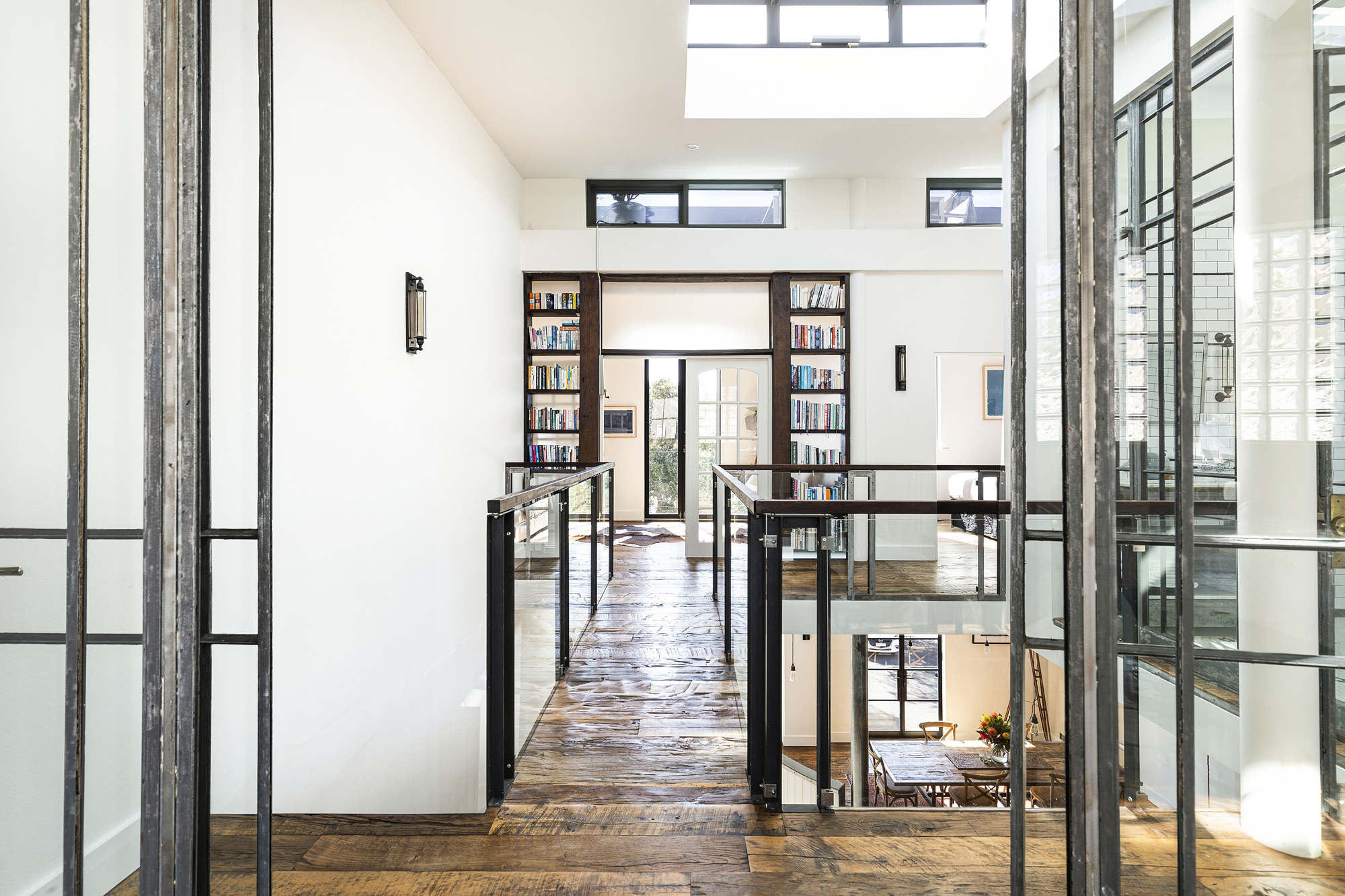
Not to be outdone, 2 Printers Lane Darlinghurst, which sold in 2021, was another high-calibre conversion. A striking architectural renovation by the esteemed Tribe Studio had transformed this 1930s-built former substation into a masterpiece of modern history. With soaring 4.5 metre ceilings, a private rooftop with plunge pool, marble kitchen, integrated fridge, custom Australian-made fixtures, and underfloor heating, its evolution was recognised in the 2019 National Architecture Awards.
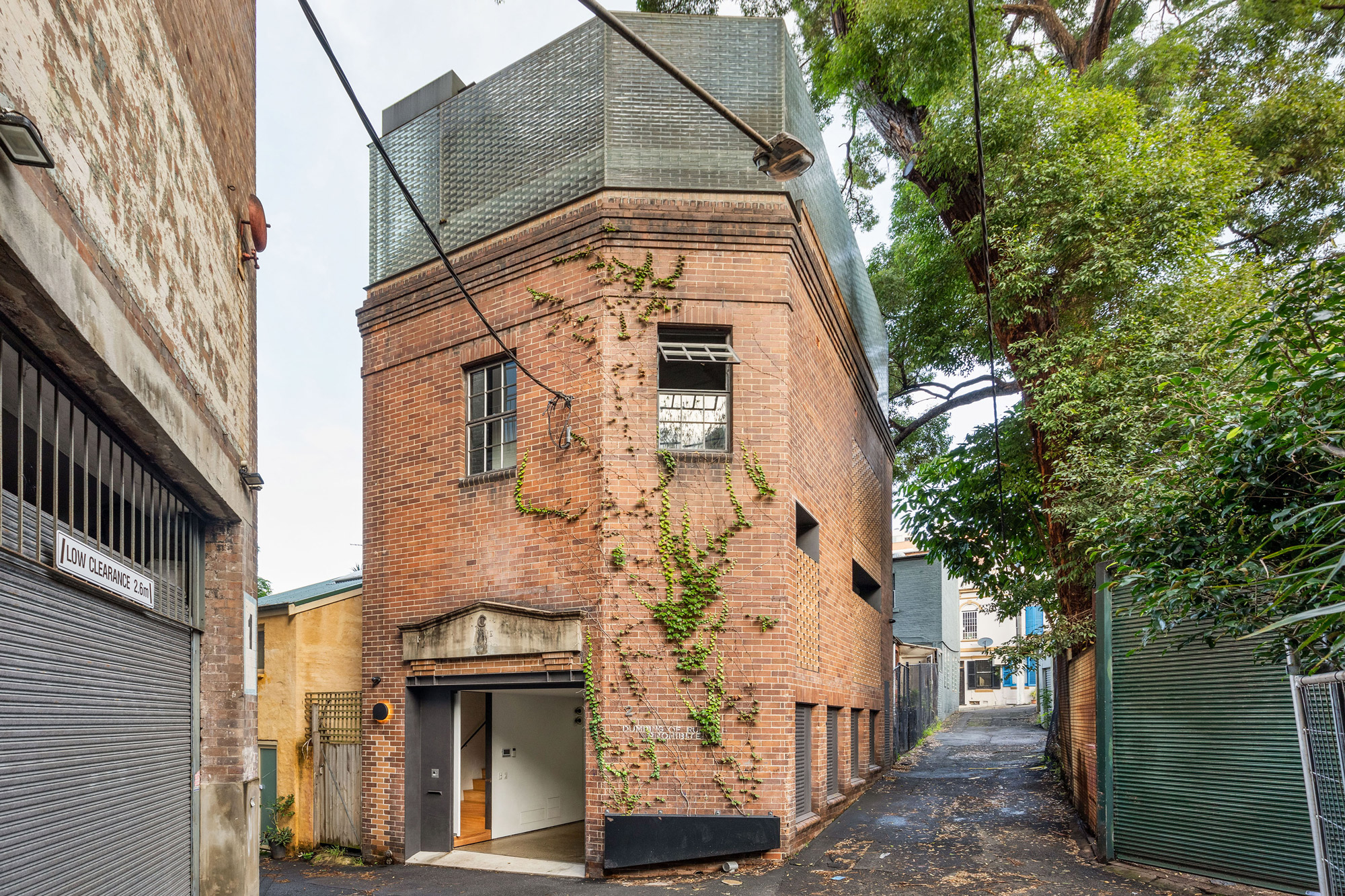
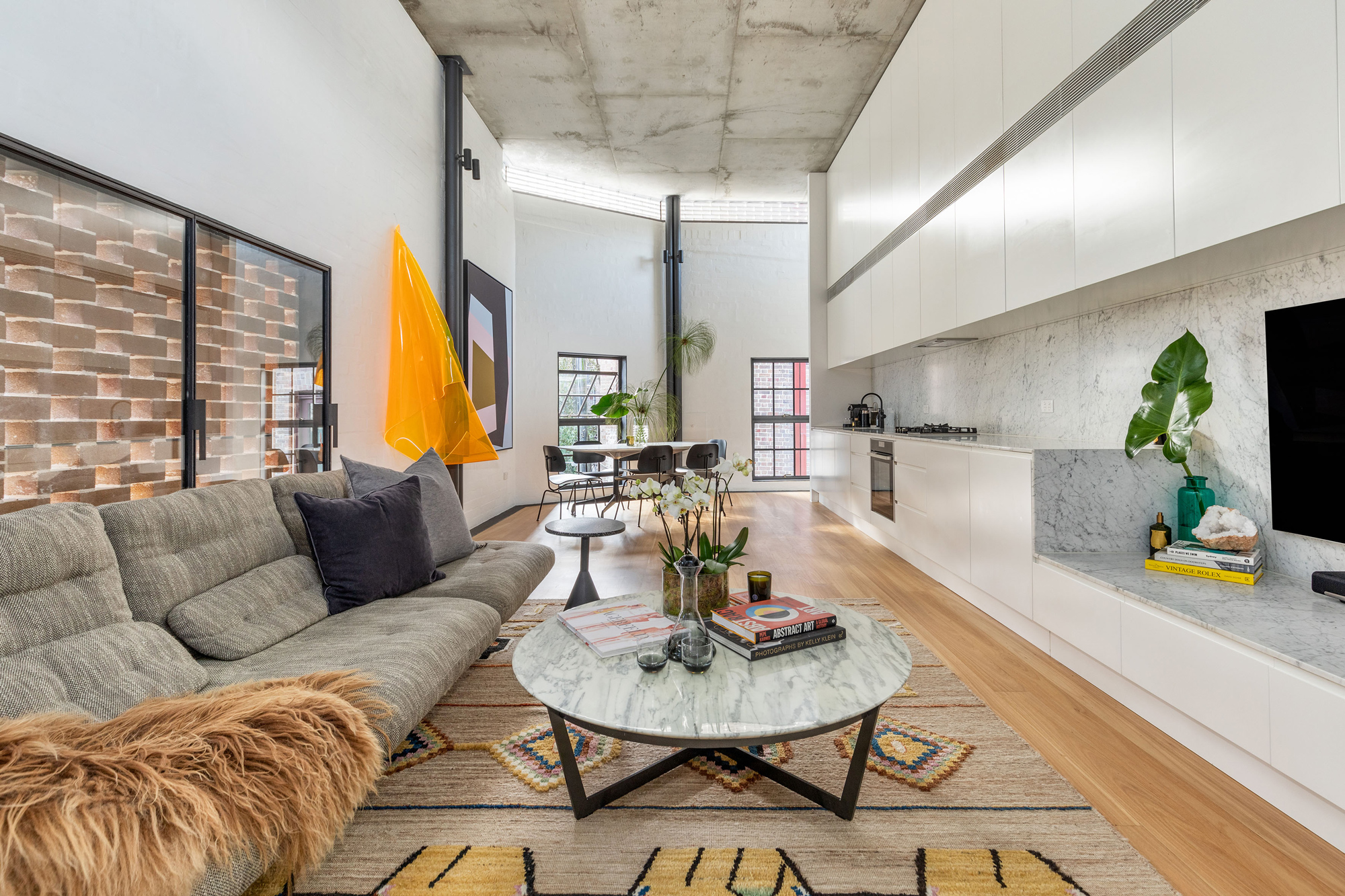
5. Imagination, unlocked.
It’s not only homeowners keen for a foothold in warehouse living – investors too. Often with zoning that allows for multiple uses, varied income streams, and the literal space to house these ambitions, investors continue to recognise the value of warehouse conversions.
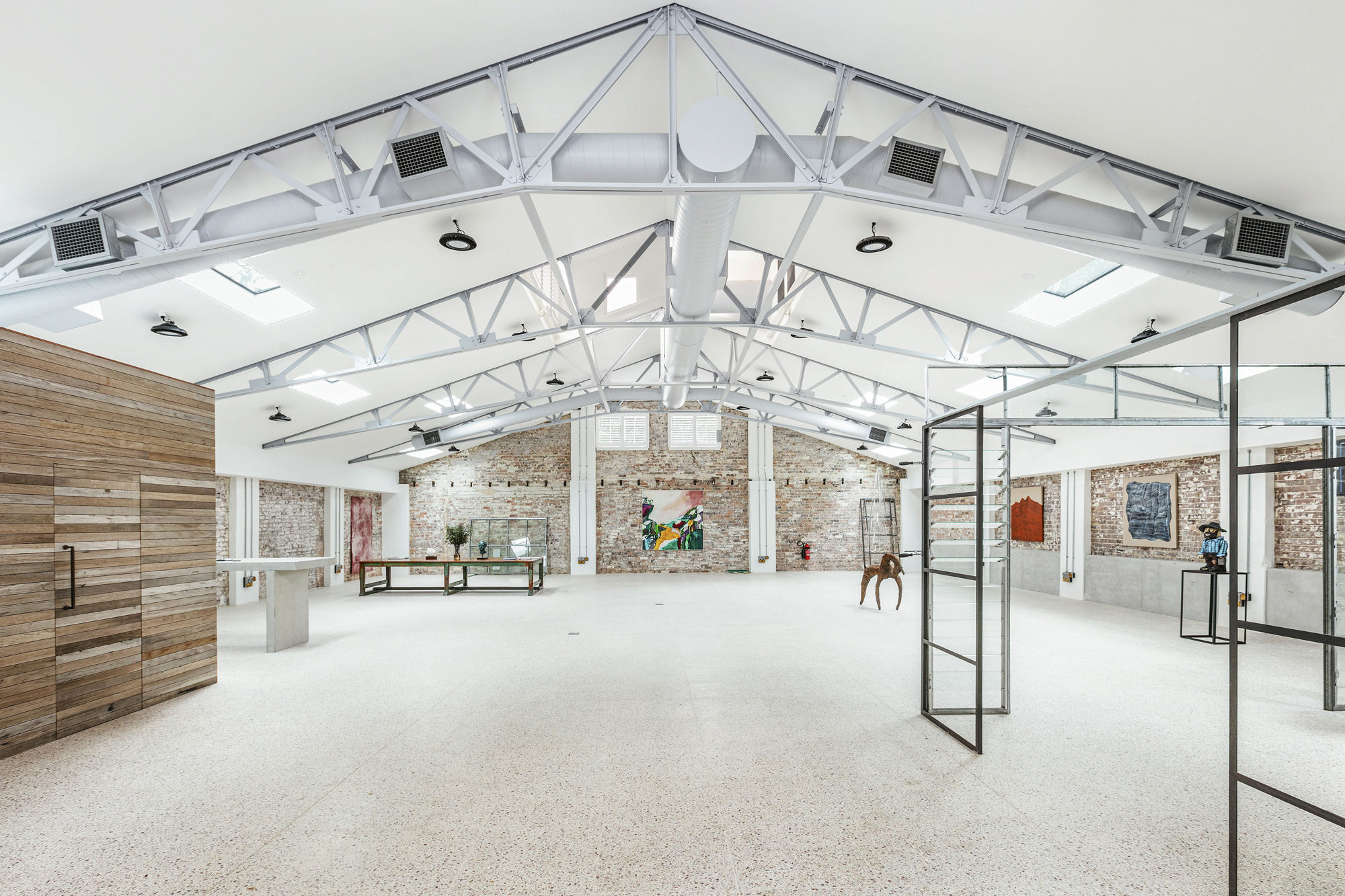
Take the terrazzo-rich property at 53a Ross Street Forest Lodge, which had undergone a considered renovation to ready it for a new chapter. Ripe for a gallery, creative space or a mixed-use residence, its R1 Zoning gave it deep potential that buyers recognised – once they made it inside, that is. A long, elaborately tiled driveway and landscaped forecourt added to the intrigue for this property, which sold in 2022 for $4.7 million.
Buyers were also keen for a scoop of the awe-inspiring former ice-cream factory at 44-50 Australia Street, Camperdown when it recently changed hands. A beautifully dramatic warehouse with proportions to match, its 13-metre high ceilings and industrial character made it a charming proposition.
Just a few doors down was 27 Australia Street –proving warehouse conversions are a favourite among commercial tenants, too. Leased in mid-2022, its flexible sky-lit interiors, park frontage and polished concrete floors made for a suitably creative blank canvas.
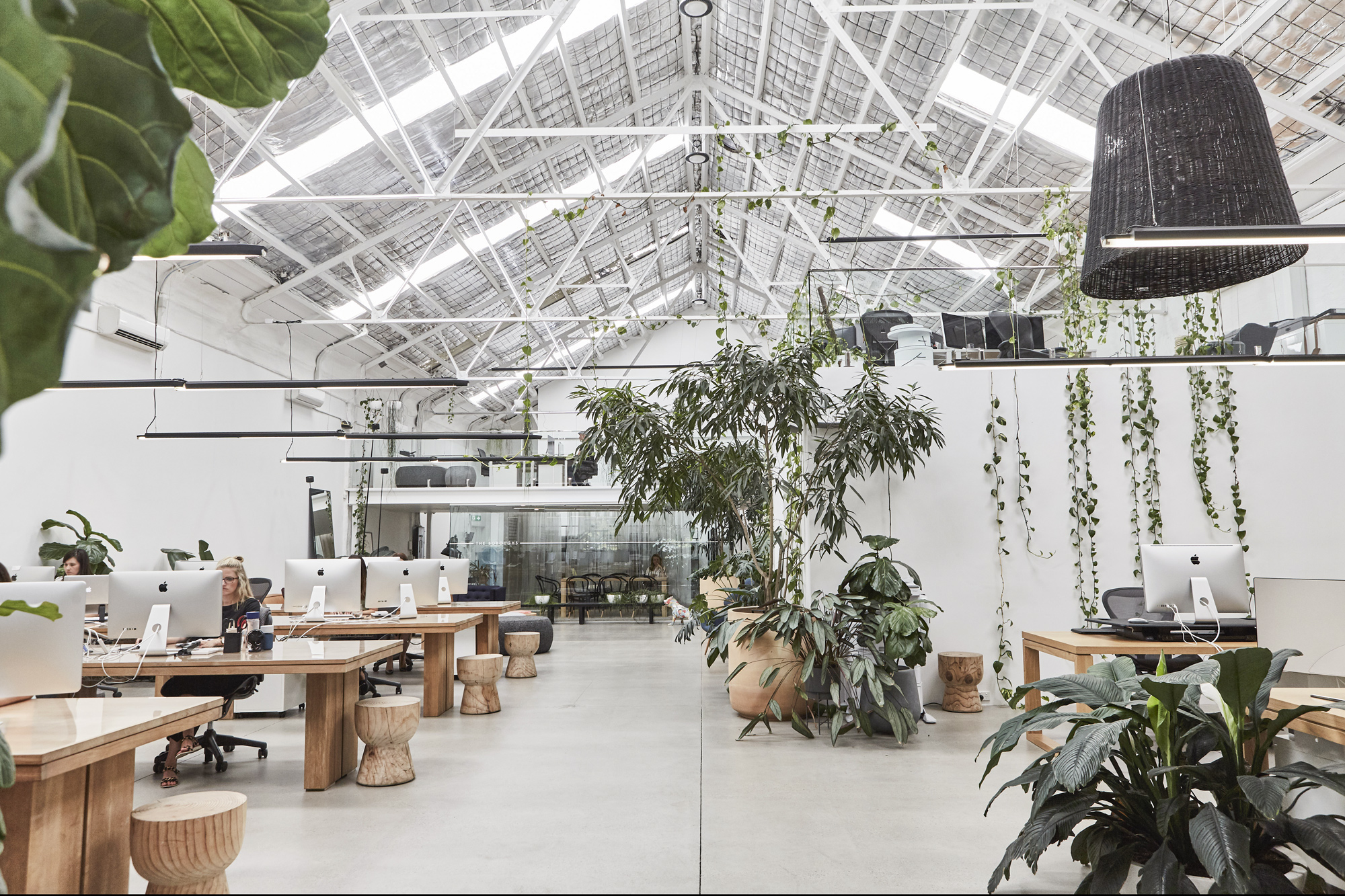
And lest we look past 39 Mitchell Road Alexandria – perhaps the quintessential example of a conversion that ‘has it all’. A voluminous residence with exposed brick and timer details, sophisticated modernity, and a two-level floorplan that could double as a residence and a creative HQ, its time on market in late 2022 generated interest across the buyer pool with investors, homeowners and occupiers vying for the keys.
